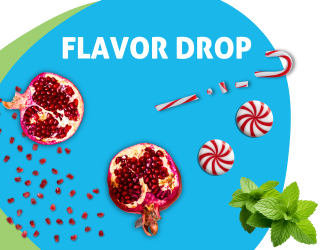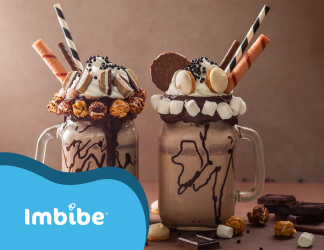 Eating and drinking is a sensory experience, which is why consumers are so captivated by colorful beverages. Consumers are even exposing themselves to new flavor experiences because some of the most brilliant-looking beverages contain ingredients that are niche and unfamiliar. Propelling this growth is social media where consumers actively share photos of their culinary experiences online, and a pop of color makes a beverage more visually interesting.
Eating and drinking is a sensory experience, which is why consumers are so captivated by colorful beverages. Consumers are even exposing themselves to new flavor experiences because some of the most brilliant-looking beverages contain ingredients that are niche and unfamiliar. Propelling this growth is social media where consumers actively share photos of their culinary experiences online, and a pop of color makes a beverage more visually interesting.
Launching a beverage with the right “look” can significantly improve its chances of being successful. Here are some insights to keep in mind when developing a beverage that capitalizes on color as much as taste:
Flavorful beverages with a striking color – Dragon fruit, hibiscus and blood orange are great examples of ingredients that have become mainstream for their visual appeal as much as their flavor. Pink and magenta drinks are especially popular on Instagram feeds, and dragon fruit and hibiscus are just a couple examples of ingredients that impart these hues. Starbucks is a big proponent of these ingredients, which can be found in drinks like the Mango Dragon Fruit and Berry Hibiscus Refreshers. Blood oranges are slightly bitter and less acidic than traditional oranges, but what makes them stand out (other than their cool name) is their radiant, red color. Blood orange is in products by brands like San Pelligrino, Huberts Lemonade, and Bai Bubbles.
Functional ingredients that add color – Functional beverages are in demand and a functional ingredient that’s also visually appealing is even more marketable. Superfood lattes are a prime example. These drinks leverage nutrient-dense ingredients that are still somewhat novel in beverages and have taken over Instagram feeds thanks to their stunning, colorful appearance. Some of the most common functional ingredients in these lattes include turmeric (25K+ posts), beetroot (14K+ posts), charcoal (12K+ posts), and blue algae (5K+ posts). Newer ingredients on the scene are schisandra, a bright red adaptogen found in products like Rise Rose & Schisandra Kombucha and Rebbl Elixirs Berries & Crème, and butterfly pea flower, an antioxidant-packed, color-changing tea that’s popping up on menus at establishments like the Ritz Carlton, Toast Tea Café, and Starbucks in Asia.
Fantasy flavors – Fantasy flavors don’t necessarily have a standard of identity, but consumers are drawn to them. Unicorn is the number one ice cream flavor of 2018 according to data from Square, which looked at sales from roughly 10,000 ice-cream shops. There’s also the Unicorn Frappuccino, Polar Unicorn Kisses Seltzer, and Unicorn Tears Gin Liqueur to name a few. The taste of these products is not as easily identified as, say, chocolate or vanilla, but what brings these products together is their appearance. Some common attributes associated with unicorn-flavored beverages are colors like pink, blue, or rainbow and ingredients like edible glitter. Other notable mentions of color-influenced fantasy flavors include pink lemonade and birthday cake.
Color is a great tool to capture consumers’ attention and make a beverage more marketable through social media and traditional advertising. Of course, many ingredients that are naturally colorful also require additional ingredients like juice concentrates to really make the color pop, but they can be a great starting point for formulation. If you’re interested in developing a colorful beverage, or are interested in more insights for developing your next beverage, email us at thedrinktank@imbibeinc.com to talk to our beverage experts.



